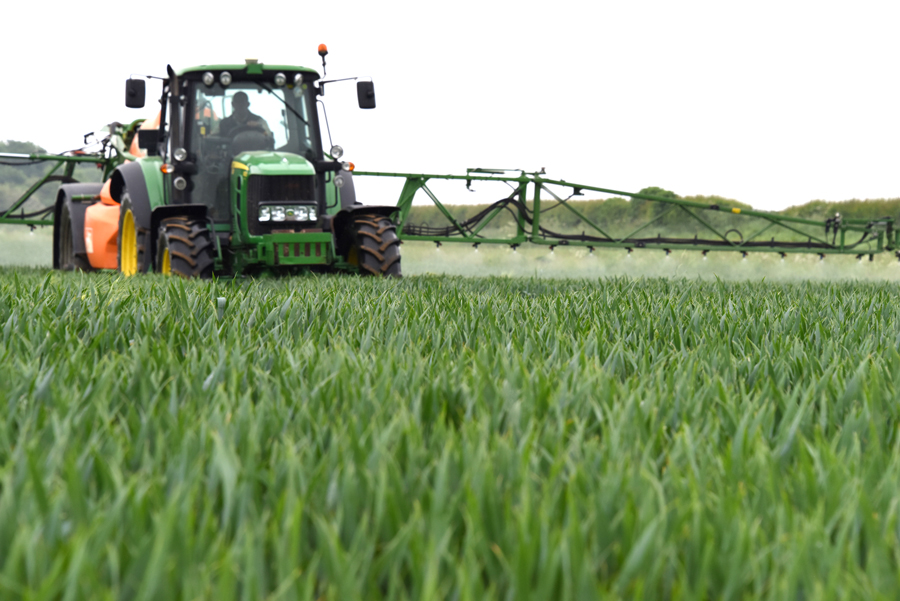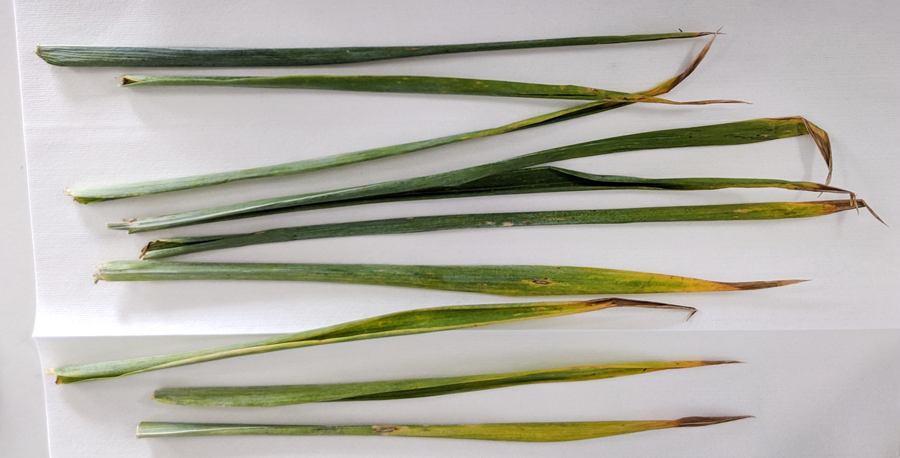Septoria warning as high levels of latent disease is found in plant samples
11th May 2021
Septoria pressure in UK wheat crops is expected to build in the coming weeks as warmer temperatures are set to follow early May rainfall.
Laboratory analysis of hundreds of plant samples has highlighted significant levels of latent Septoria, which indicates disease pressure could be greater than expected following a cold, dry April for most farms.
The Met Office says it expects a return to more-typical May temperatures of 15-16 degrees in the next fortnight, and Corteva Agriscience is warning that the conditions could be favourable for Septoria to spread through crops ahead of key flag-leaf fungicide applications which take place from mid-May onwards.
Sally Egerton, UK and Ireland Technical Manager for Corteva, said: “In general cereal crops have looked reasonably clean and free from disease which led to T0 fungicides either being skipped, or rates being cut back.
“T1 fungicides are going on following very little rain so, again, programmes will have been adjusted according to the perceived level of disease prevalence.
“Now we are seeing reports of high levels of latent Septoria infection which will spread with further rain events and the warmer temperature expected in the next 10-12 days.”
Microgenetics’ rapid test for Septoria, SwiftDetect, indicates the level of infection using a traffic light system and log genome equivalents, helping farmers to understand their position before making a decision on the appropriate product and rate for a T2 fungicide spray.
Microgenetics says it has not been surprised by the number of positive samples sent in from fields across England and Wales, which has highlighted the importance of testing.
Chris Steele, Product Manager for SwiftDetect, said: “We have detected latent Septoria in over 400 samples which have been sent to our laboratory since T1 applications took place.
“Many of the positive samples come from varieties which do not have a strong disease profile, and where growers might expect to find Septoria present, even if it was not visible.
“But we have also had positive samples from varieties which have excellent Septoria ratings, which demonstrates the importance of testing before deciding on product choice and dose rate.
“Once temperatures get to 15 degrees and above, Septoria can really get going.”
Corteva is advising growers to use a robust product which will deliver lasting protection during a key growth stage of the crop.
Univoq fingicide, containing Inatreq active, was approved for sale and use in the UK last month and offers protectant control on all septoria strains.
The product is the first new target site for septoria control registered in the UK for 15 years.
Sally said: “Univoq has the flexibility growers require to adjust their programmes according to their disease risk. We are advising 1.25 litres per hectare in most situations, but that rate can be adjusted up to 1.5l/ha high pressure situations, or down to 1.1l/ha.
“Growers will get long-lasting, robust protection from the Inatreq molecule which will also treat any latent infection in the crop.
“Applied at the T2 timing, Univoq will maintain green leaf area and allowing the crop to build yield long after application.”


